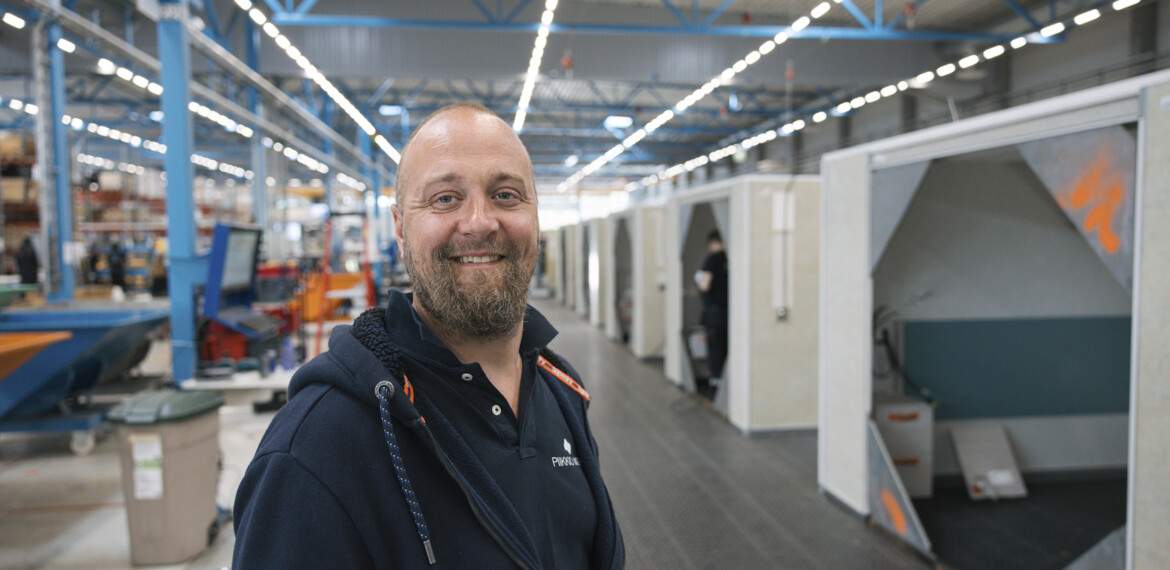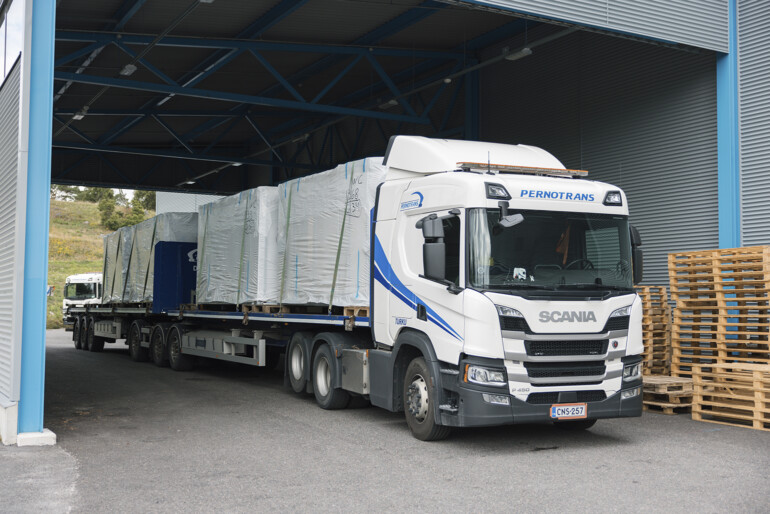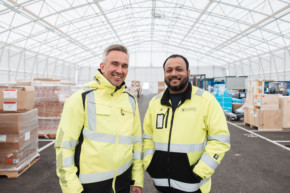Each cabin on a luxury cruise liner is different
The cabins for the world’s finest cruise liners are manufactured in Piikkiö. Most of them are delivered to the Meyer shipyard via the outdoor storage areas of the Port of Turku.

At the Piikkiö Works plant, cabin modules are moving fast on the production line, from one stage to another, like cars at an automotive plant. The production is flowing, which is quite appropriate for the maritime industry.
“The assembly of a module starts by attaching the first wall element to the bathroom floor. That is followed by over 40 different work stages before the final inspection”, says Production Manager Lauri Laakso.
At best, the plant completes 24 cabins per day, and the production line may put out up to 8,000 modules in a year. The assembly is made more complicated by the fact that each cabin is different, at least regarding dimensions or electrical and plumbing work.
“It is also common that the preliminary design plans of the cabins are finalised during the project. All in all, it’s a huge puzzle with many aspects to think about and sort out”, Mr Laakso describes.
Owned by the Meyer shipyard, Piikkiö Works employs directly around 300 people, and it is one of the biggest companies in Kaarina.

Module construction has many advantages
The vast majority of the cruise liner cabins are nowadays manufactured as modules. It means that the cabins are installed in place flexibly as the construction of the ship proceeds at the shipyard.
“We noticed already in the 1980s that module construction of cabins is very cost-efficient; it enhances the shipbuilding logistics and ensures the high quality of the products. That was when we registered the first patents in the industry”, Mr Laakso says.
Previously, Piikkiö Works also produced cabins for other companies, and modules were transported through the Port of Turku to shipping companies around the world. In recent years, it has only manufactured cabins for its parent company.
Piikkiö Works has previously manufactured room modules e.g. for the Children’s Hospital in Helsinki and the Torni hotel in Tampere. Mr Laakso suggests that the company may also break new ground outside the maritime industry in the future.

Port is well suited to the logistics chain
The cabin modules of Piikkiö Works are warehoused in the company’s own premises as well as the outdoor storage area in the Port of Turku. Shipments depart from Piikkiö to the Port on a weekly basis.
“The location of the Port is excellent, as it is conveniently on the way to the shipyard. The Port is able to offer us plenty of guarded storage space, at best we have occupied up to 10,000 square metres.”
According to Mr Laakso, the co-operation with the Port works well.
“Our situation and storage needs vary depending on the construction cycle of ships, but the Port is able to serve us very flexibly.”
Part of the subcontractors of Piikkiö Works also use the Port’s warehousing services when they supply materials to Piikkiö. Some 60–70 per cent of the components used in the assembly of cabin modules come from Finland.
There will be a large number of cabins – and more
At present, Piikkiö Works is manufacturing cabins for the Mein Schiff 7 cruise liner being built at the Meyer shipyard. The production of cabins for Icon 2 will start in October and those for Icon 3 in the autumn next year.
Mein Schiff 7 has 2,023 cabins and the Icons as much as 4,118 cabins per ship. At the time of the interview, in the early days of August, there are 393 cabins for Mein Schiff 7 waiting in the Port to be transported to the shipyard.
“The projects are keeping us, the storage areas and the shipyard conveniently busy”, Mr Laakso says and smiles.

Text: Matti Välimäki
Photos: Ilari Välimäki



